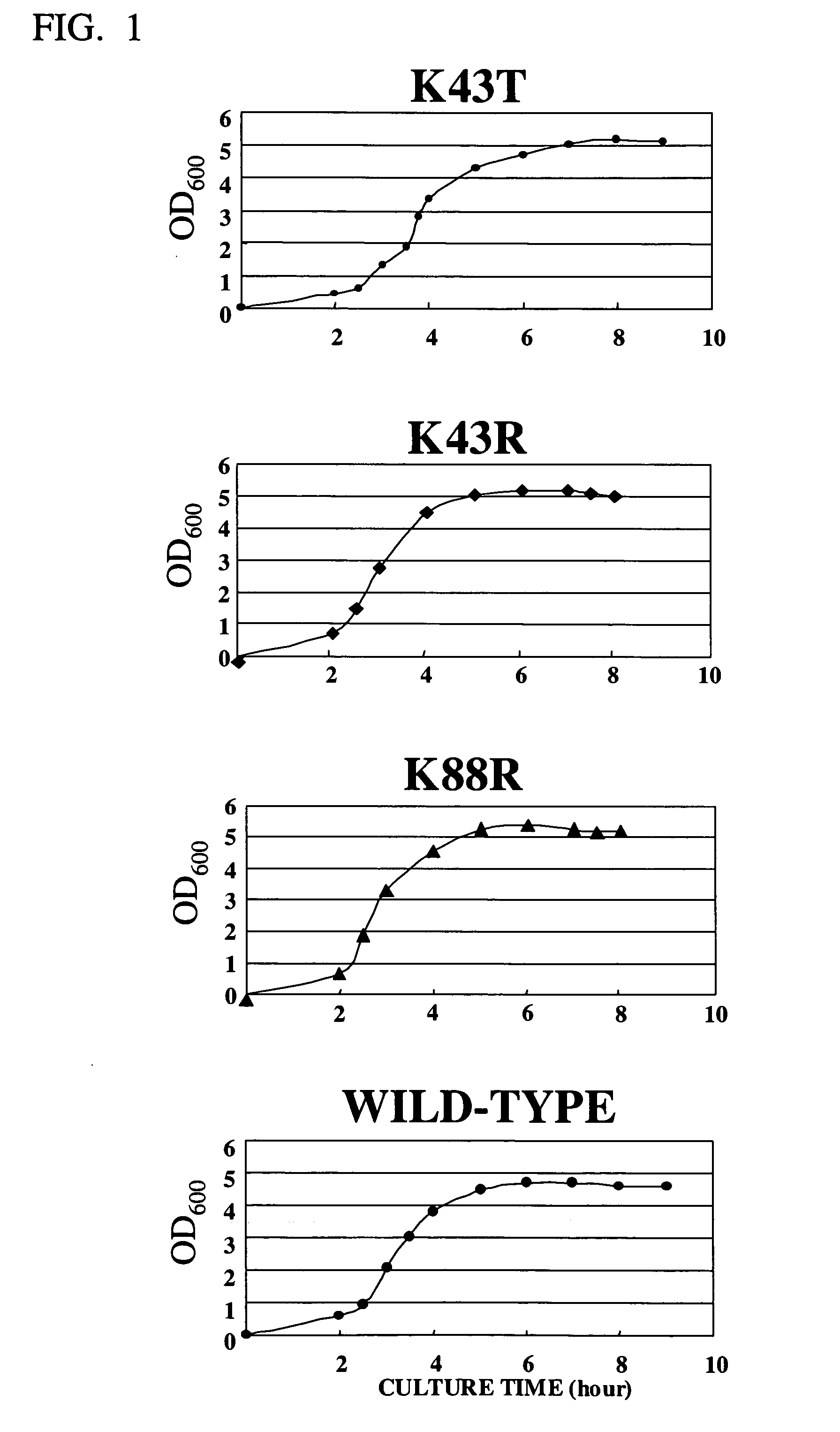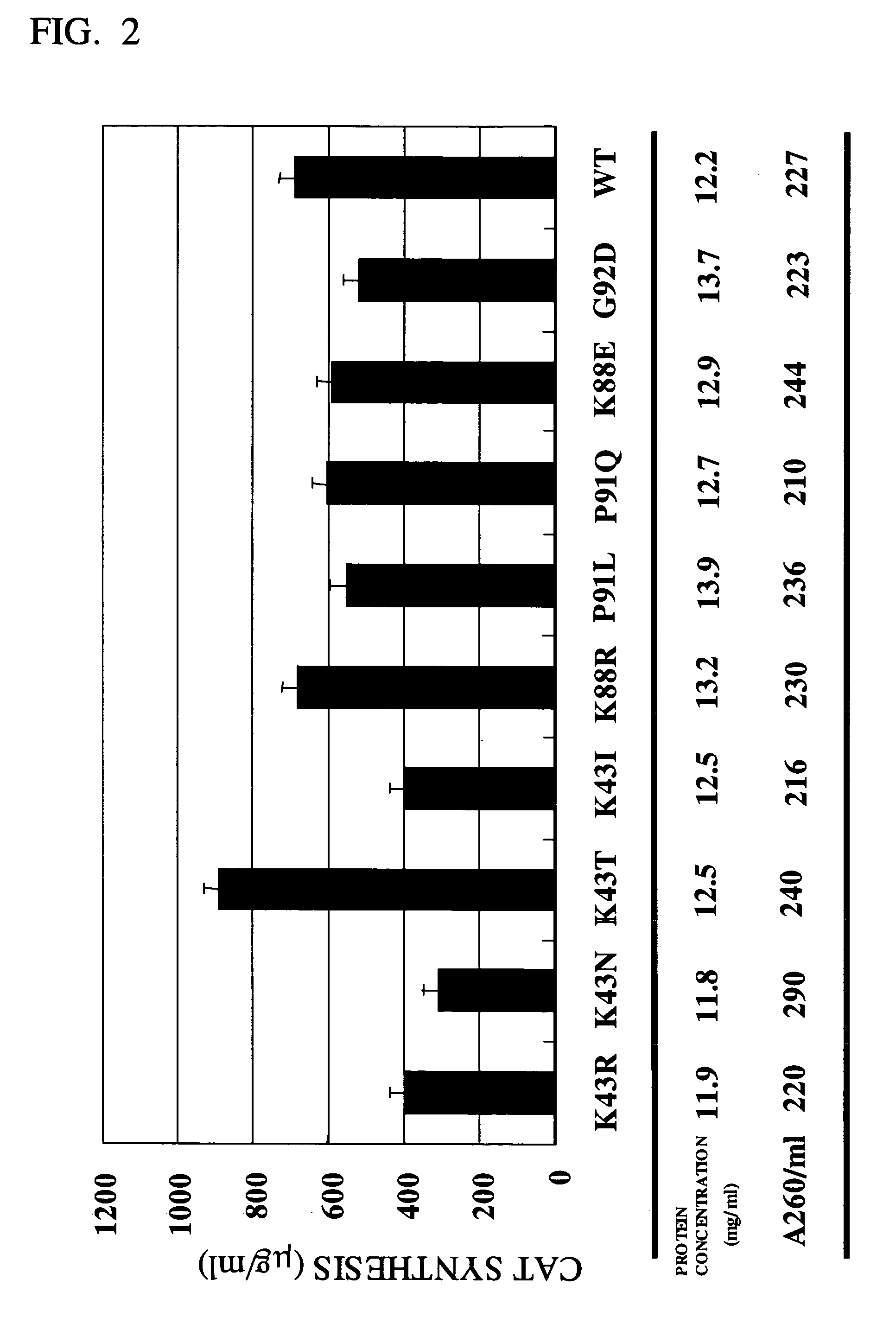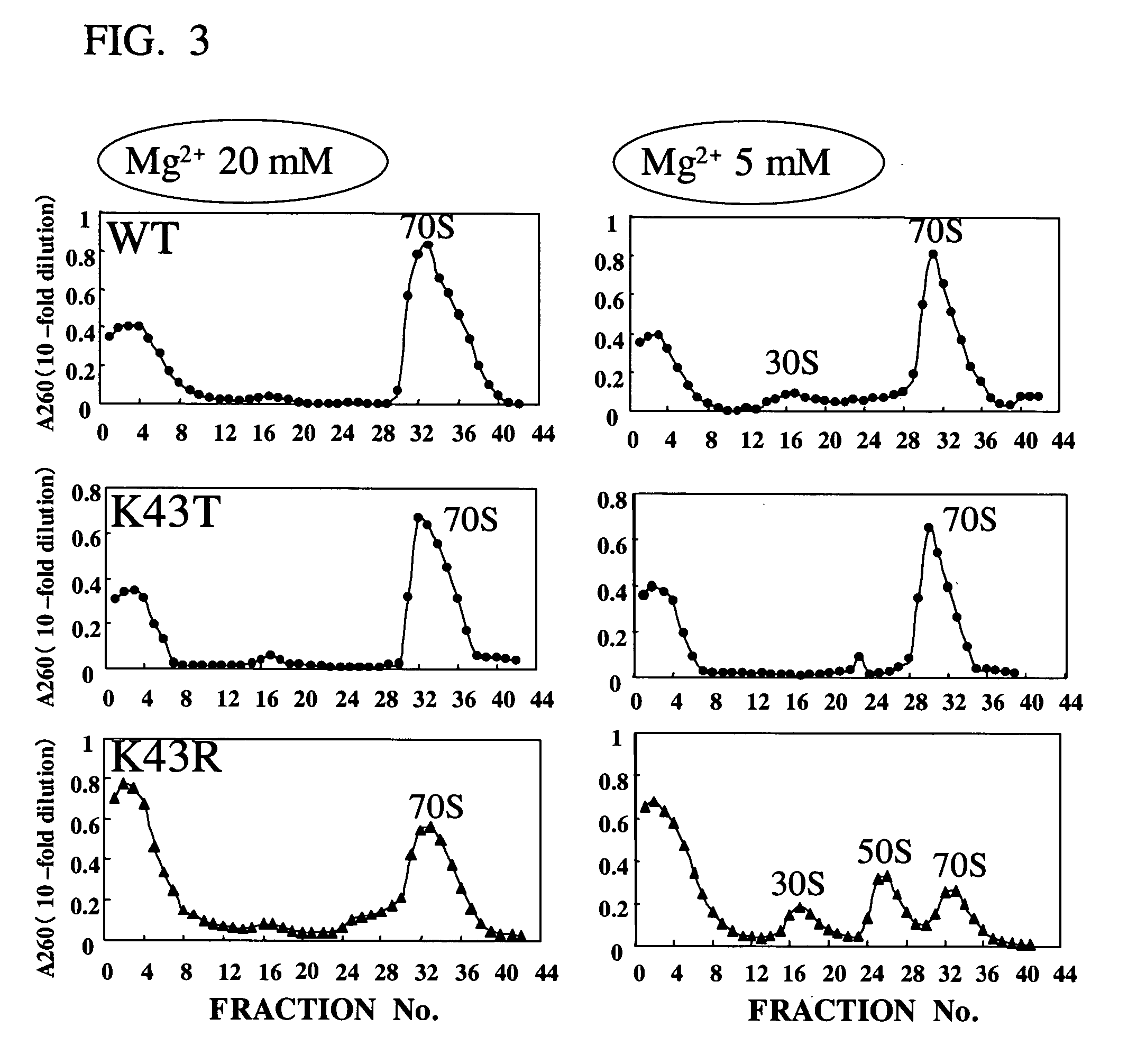Extract of E. coli cells having mutation in ribosomal protein S12, and method for producing protein in cell-free system using the extract
- Summary
- Abstract
- Description
- Claims
- Application Information
AI Technical Summary
Benefits of technology
Problems solved by technology
Method used
Image
Examples
example 1
Mutation from E. coli BL21
[0043] Mutants from a parent strain, E. coli BL21 were screened for those capable of growing in the presence of streptomycin. 150 streptomycin-resistant spontaneous mutants of E. coli BL21 were obtained, and these were sequenced for the full-length rpsL gene. As a result, it was confirmed that about 80% of the resistant mutants have a mutation in the rpsL gene. Nine such rpsL mutants were obtained, and their typical strains are shown in Table 1. In Table 1, SmR in the phenotype column means streptomycin resistance; and SmD means streptomycin dependence. The mutation site indicates the base substitution site in the nucleotide sequence shown in SEQ ID NO:1; and the amino acid substitution indicates the amino acid substitution site in the amino acid sequence shown in SEQ ID NO:2. The symbol for the base and the amino acid is a one-letter abbreviation.
TABLE 1List of Mutants from E. coli BL21Amino AcidStrain (Mutant)Mutation SiteSubstitutionPhenotypeBL21——wil...
example 2
Cultivation in the Presence of Antibiotic
[0044] Growth curves of E. coli mutant strains (K43T, K43R and K88R) obtained in Example 1 and the parent strain (wild-type BL21) cultivated in 2×YT medium at 37° C. were shown in FIG. 1, respectively In FIG. 1, the turbidity (600 nm absorbance) of the cultures sampled within a period of from 2 hours to 9 hours after the start of the cultivation was measured, and used to estimate the amount of cells. Any of the mutant strains shown in FIG. 1, showed the almost same growth pattern as that of wild-type, whereas the amount of cells of the mutant K43T was the largest in 8 hours after the start of the cultivation.
example 3
Preparation of Cell Extract from E. coli Mutants, and Comparison of Protein Synthesis Activity by Cat Assay
[0045] The mutant strains shown in Table 1 were separately cultivated in 2×YT medium (16 g / liter of bactotrypsin, 10 g / liter of yeast extract, and 5 g / liter of NaCl) at 37° C., and the cells in the mid-log phase (OD600=3, about 109 cells / ml) were collected. According to the method of Zubay et al. (vide supra), an E. coli extract S-30 was prepared from these cells. Protein synthesis was carried out as follows: To a solution having the composition shown in the following Table 2, added was 120 ng of pK7-CAT (CAT expression vector; see Kim et al., Eur. J. Biochem. 239, 881-886, 1996). 7.2 μl of the E. coli S-30 extract was added to it to make 30 μl as a whole. The reaction solution was batchwise incubated at 37° C. for 1 hour. Thus synthesized, the CAT protein was quantified according to the method of Shaw et al. (see Methods Enzymol., 735-755, 1975). The results are shown in FIG....
PUM
| Property | Measurement | Unit |
|---|---|---|
| Temperature | aaaaa | aaaaa |
| Volume | aaaaa | aaaaa |
| Molar density | aaaaa | aaaaa |
Abstract
Description
Claims
Application Information
 Login to View More
Login to View More - R&D
- Intellectual Property
- Life Sciences
- Materials
- Tech Scout
- Unparalleled Data Quality
- Higher Quality Content
- 60% Fewer Hallucinations
Browse by: Latest US Patents, China's latest patents, Technical Efficacy Thesaurus, Application Domain, Technology Topic, Popular Technical Reports.
© 2025 PatSnap. All rights reserved.Legal|Privacy policy|Modern Slavery Act Transparency Statement|Sitemap|About US| Contact US: help@patsnap.com



